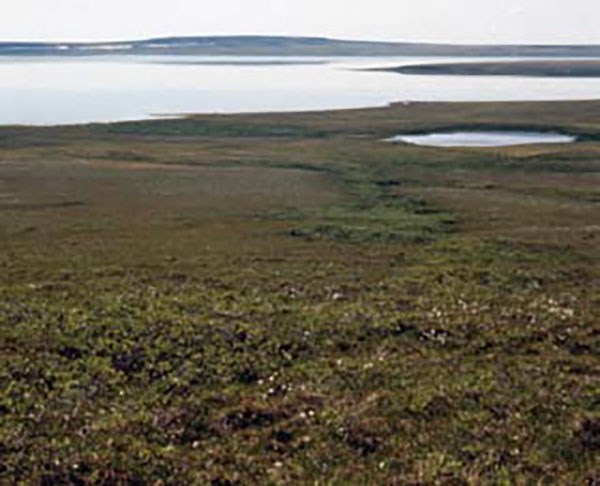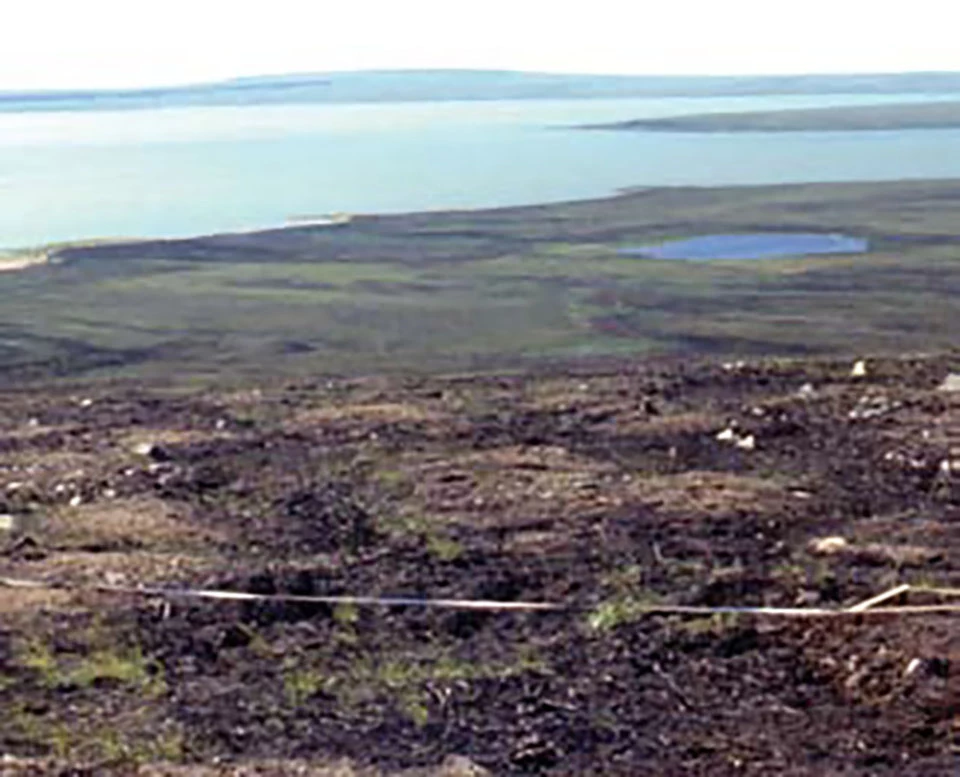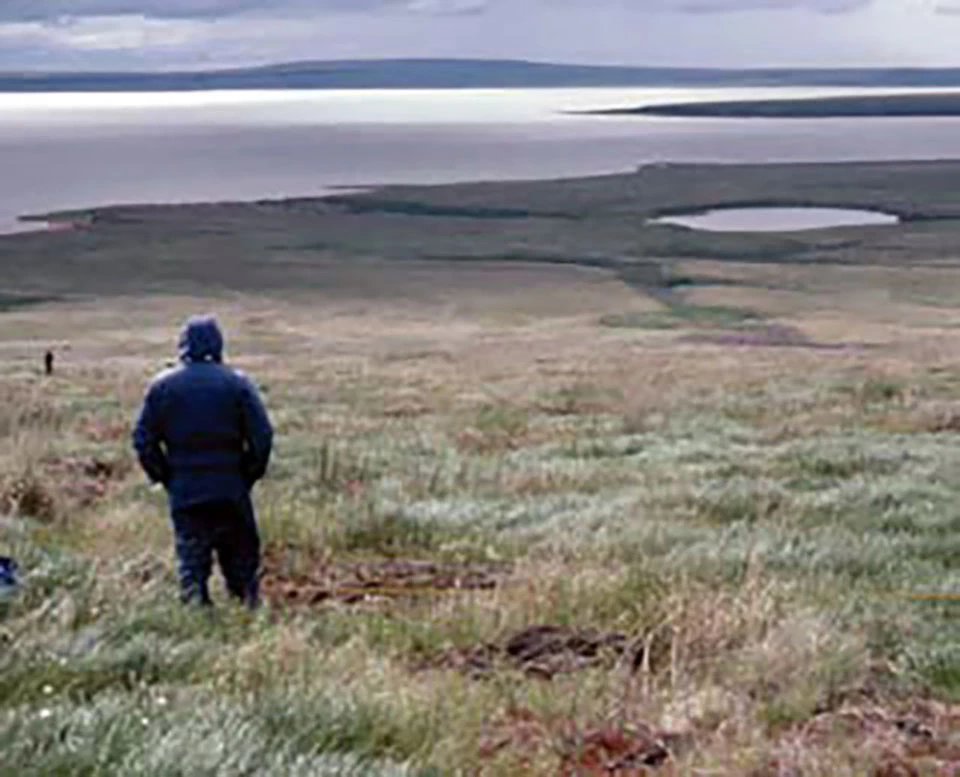Last updated: October 23, 2021
Article
Long-term Monitoring of 1977 Tundra Fires in the Northwest Alaska Parks

NPS photograph by Jennifer Barnes

Photograph courtesy of Charles Racine
The BELA site on the Seward Peninsula is located where a large 1977 tundra fire burned a west facing slope along Imuruk Lake (Nimrod Hill). Pre-fire vegetation and soils along this slope ranged from moist tussock-shrub tundra on the lower slopes to dwarf shrub tundra on the steeper upper-slope (12%) and wet sedge meadow on the ridge top. We sampled vegetation before the fire in 1973 and at eight sites following the fire at irregular time intervals from one year to 32 years. Over the monitoring period we have seen dramatic changes in vegetation on Nimrod Hill (Figure 1), particularly on the severely burned upper-slope. Immediately after the fire, the upper-slope sites were dominated by pioneering mosses and liverworts (Figure 2), followed by sedges and grasses within a decade (Figure 3). Twenty to 30 years after the fire, both deciduous and evergreen shrubs expanded dramatically at all sites on the hill; particularly on the upper slope where fast growing willows (Salix pulchra) now up to 5 ft (1.5 m) tall, currently cover 30-40% of the slope (Figure 4). The thaw depths and active layer thickness have recovered to pre-fire levels at the lower-slope tussock tundra sites; however, there is evidence for major permafrost thawing and surface subsidence on the well-drained slope in the area colonized by willows. We have seen slow recovery of Sphagnum moss and lichens 32 years after fire. The loss of Sphagnum moss could change the hydrologic and water retention capacity of tussock tundra and the loss of lichens could reduce winter forage for caribou and reindeer. This long-term record of change provides valuable documentation of fire effects on vegetation, permafrost, and wildlife habitat during an era of rapid climate warming in the Alaska Arctic.


Left image
Figure 2. 1978 one year post-fire on the severely burned upper slope. Cover was dominated by early successional mosses and liverworts with bare frost boils and exposed rock.
Credit: Photograph courtesy of Charles Racine
Right image
Figure 3. 1983 six years post-fire, this site was dominated by sedges (Carex) and grasses (Calamagrostis) that overgrew the mosses and liverworts. Gary Ahlstand, former AKRO NPS Research Ecologist, shown in photo.
Credit: Photograph courtesy of Charles Racine
Racine, C., R. Jandt, C. Meyers, and J. Dennis. 2004.
Tundra fire and vegetation change along a hillslope on the Seward Peninsula, Alaska, USA. Arctic, Antarctic and Alpine Research 26:1-10.
Racine, C.H., L.A. Johnson, and L.A. Viereck. 1987.
Patterns of vegetation recovery after tundra fires in northwestern Alaska. Arctic and Alpine Research 19:461-469.
